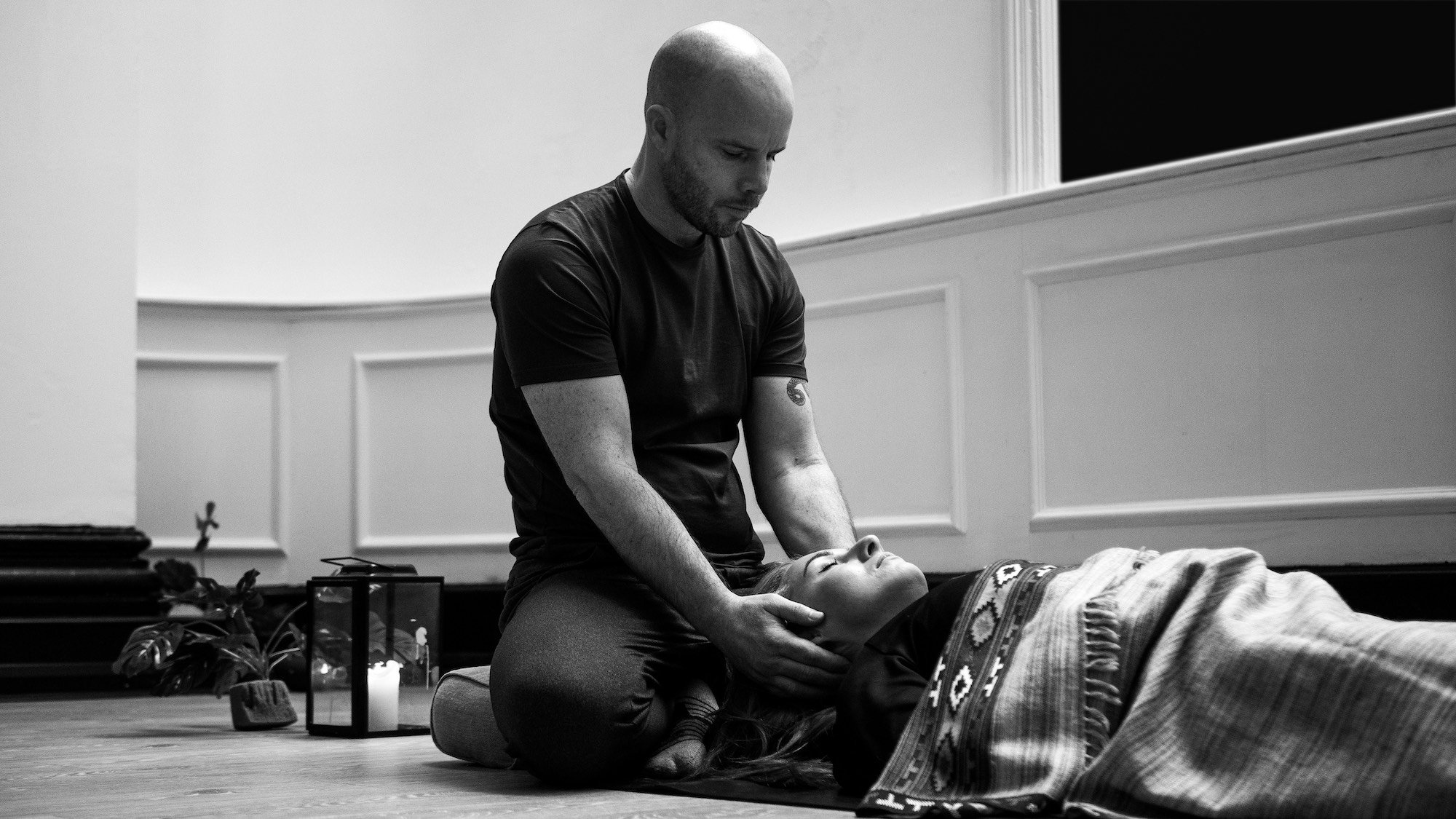What is breathwork?
WHAT DOES IT INVOLVE AND HOW CAN IT SUPPORT YOUR JOURNEY OF INTEGRATIVE HEALING?
Although breathing comes naturally to us all and that we simply cannot survive within a body starved of oxygen, we so often are disconnected from the transformational qualities of the breath that flows through us.
It is beautiful to witness the way in which a new born child breathes as their breath moves through them, unimpeded by tension, holding and disfunction. Their breath, life force energy and emotions ripple through them like a slow moving stream, their bellies rising and falling away gently.
As we age and become individually impacted by our own life experiences, this natural, free flowing breath starts to represent and become affected by the qualities of our unique internal environment.
Our internal landscape is most significantly altered when we have suffered any form of trauma that was unable to be fully discharged from our body and the energetic residue remains in place. The presence of this energetic residue can feel extremely uncomfortable and can represent a painful reminder of the trauma that caused such pain in the first place.
Many of us literally carry the residue of multiple unresolved traumatic experiences into the world, our lives so profoundly impacted by this heavy burden.
It feels important at this juncture to remember that human beings are traumatised by such a wide range of varied causes. When we think of trauma we typically imagine a soldier, broken by the horrors of battle, a victim of sexual abuse, a parent suffering the loss of their beloved child, an innocent bystander who witnessed a death or terrifying ordeal, all of which are absolutely capable of traumatising a person. We seldom consider a child being raised in a seemingly ‘safe’ home by parents who were emotionally unavailable, a child who was made to feel different, alone or not enough, those impacted by bullying, racism, sexism or other ‘hate’ crimes, those who had their heart broken or were left by a partner with little or no explanation, all of these scenarios and so many more are also more than capable of creating a trauma response that if not discharged, will linger in the body.
In the absence of safe, loving and non-judgemental spaces within which to be supported to discharge this traumatic residue, our first and most reliable line of defence is to numb, check out or distract from the present moment (where we are connected to all that is ‘alive’ in the moment).
We are often taught to examine and describe our internal environment as ‘good’ or ‘bad’. When we feel ‘good’ we want to stay in this state forever and when we feel ‘bad’ we want to change something or not feel at all.

Our inability to sit with feelings that are anything other than ‘good’ actually prolongs our pain and we continue to live a life deeply impacted by trauma.
We develop both conscious and unconscious strategies in order for us to not feel or fully express, we become addicted, we act out, self sabotage, lose ourselves in others and in addition to many other harmful behaviours we constrict the flow of breath into our body.
We hold our breath for long periods, we mouth breath in shallow gulps and into the upper chest rather than deeply down towards the belly. In addition to this highly regulated breathing pattern we create tension or holding within the tissues, fascia and musculature.
This appears to be our brain getting in the way, interfering with the bodies natural ability to discharge traumatic energy from the system, in order to maintain a level of perceived comfort. This disconnection or even lack of trust between head, body, heart and soul is sadly the cause of so much unnecessary pain.
The energy spent holding tightly onto our undischarged trauma in the form unresolved grief, unspoken truths or unexpressed emoting, coupled with shallow, restrictive breathing both can contribute towards a non-vital, lonely and almost lifeless existence.
Living in this space of containment there is less energy for joy, creativity, relationship, purpose, adventure and fully embodied presence.
Breathwork, or more specifically, trauma release breathwork is such an empowering, impactful solution when it comes to supporting people to discharge embodied traumatic residue, express emotions that have been tightly held in place and to reconnect to the magnificence of the human body.
Breath is of primary importance in this work, it is the key that unlocks the doorway to the deep interior where grief, pain and trauma are trapped within the body, it then holds the door open so that it can gently move through the body.
When free flowing, deep but gentle breath is reintroduced into the body, it responds by creating internal conditions within which trauma can be discharged or released. The traumatic residue can commonly be released through tears, vocal expression, energetically through tremoring/shaking, a flushing of the skin, perspiration or more dynamic physical expression.
Alongside deep but gentle, connected breath, I incorporate my own embodied presence, natural, non linear movement, intuitive bodywork, sound (in the form of music and voice), emotional expression and meditation to support the successful completion of this process.
After experiencing the healing capabilities of this work many people report that their reconnection to breath and feeling fully in their body once more is life changing. Breath has the ability to energise, to soothe, to support real connection, to bring us into presence and to support the release of traumatic residue. They also often report that their breath has become their new best friend!


